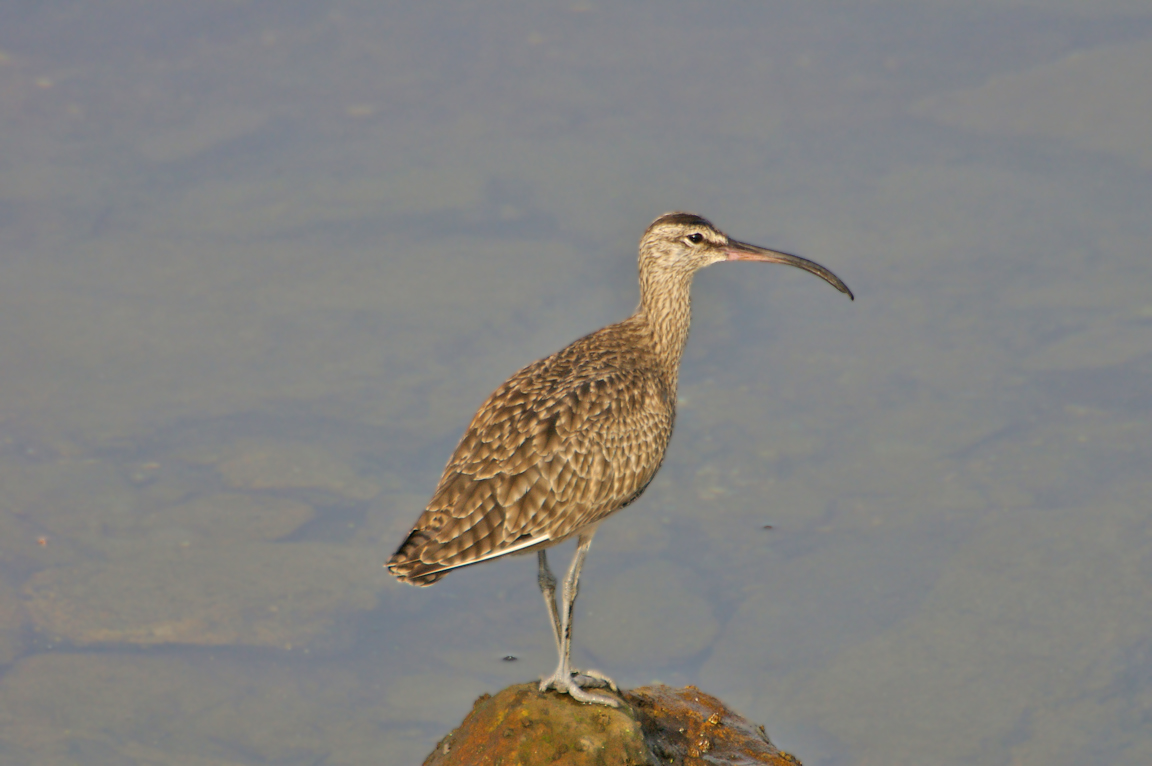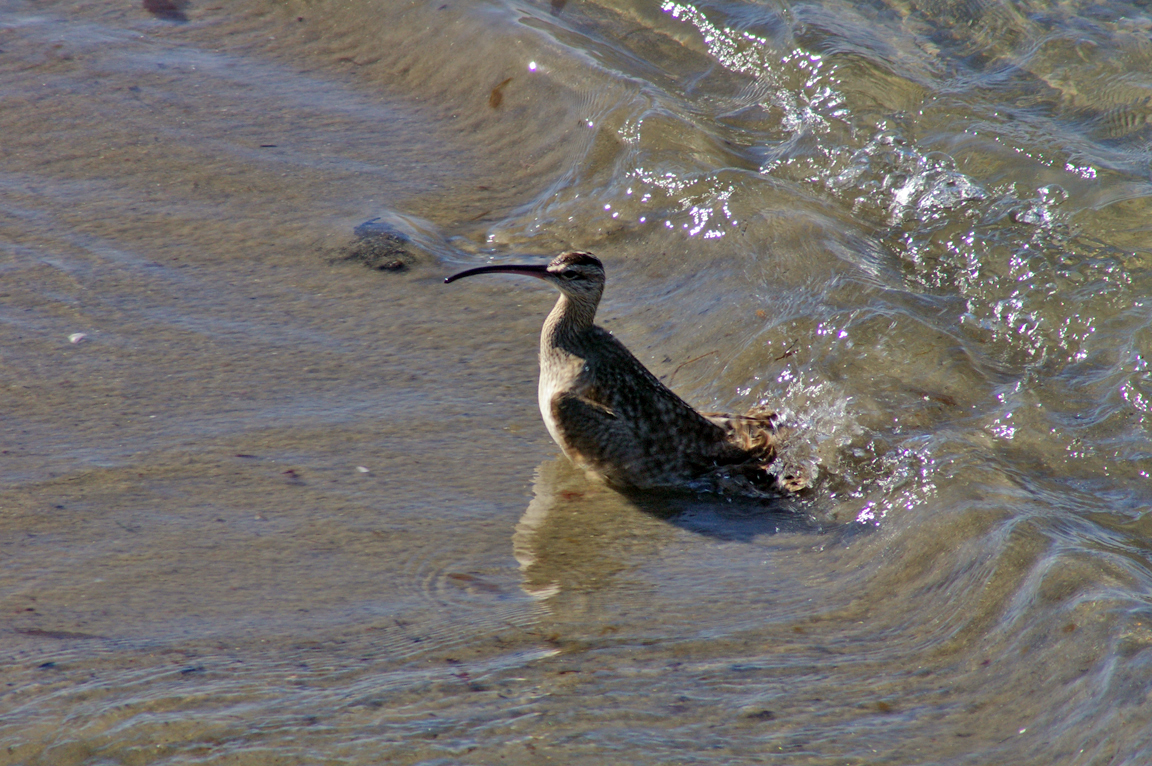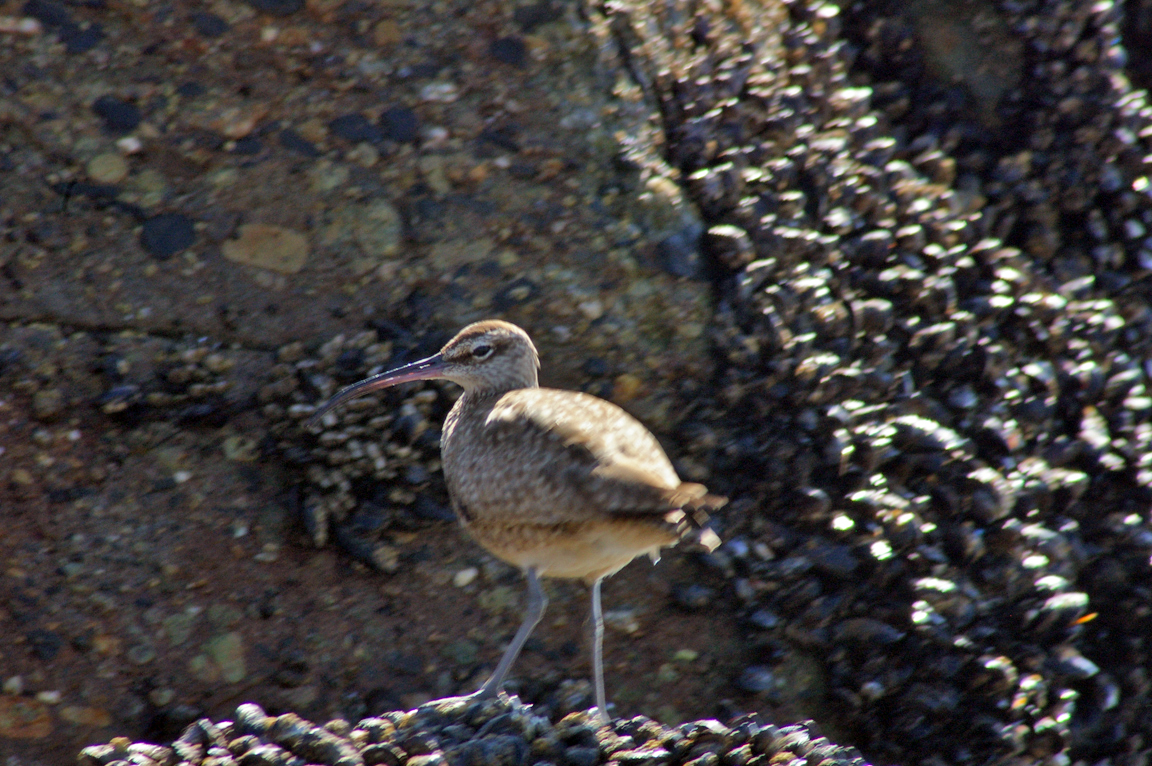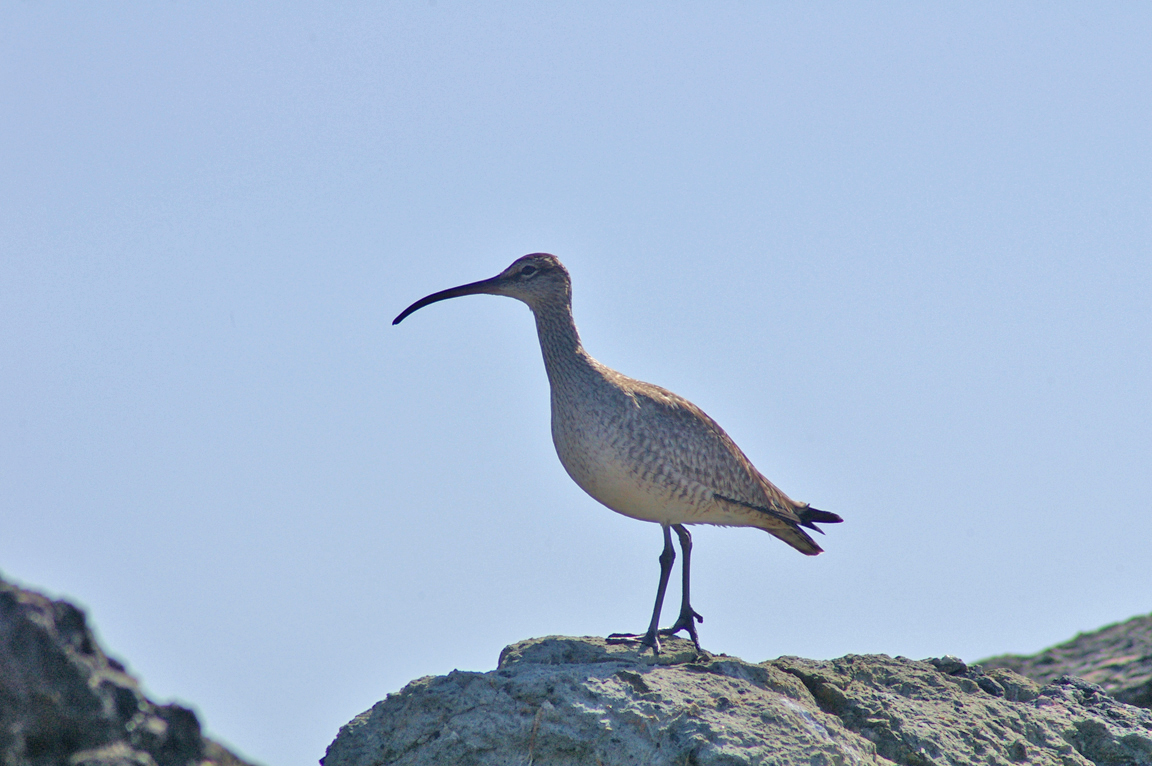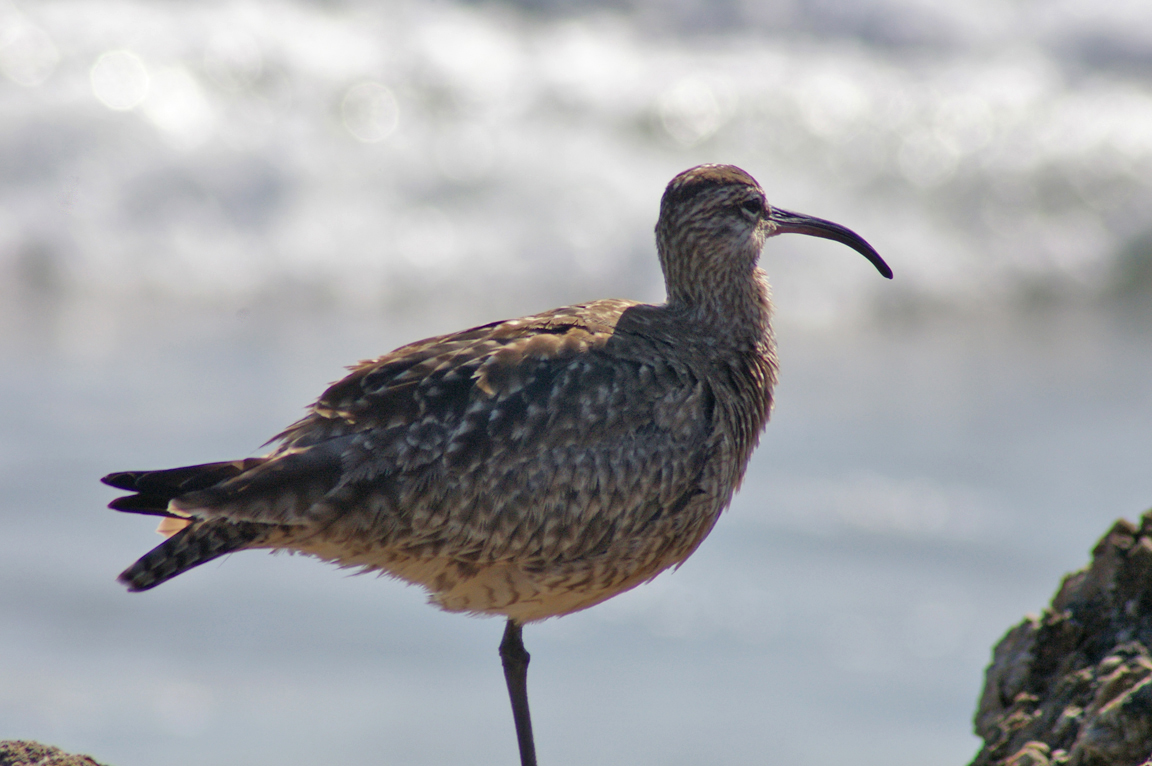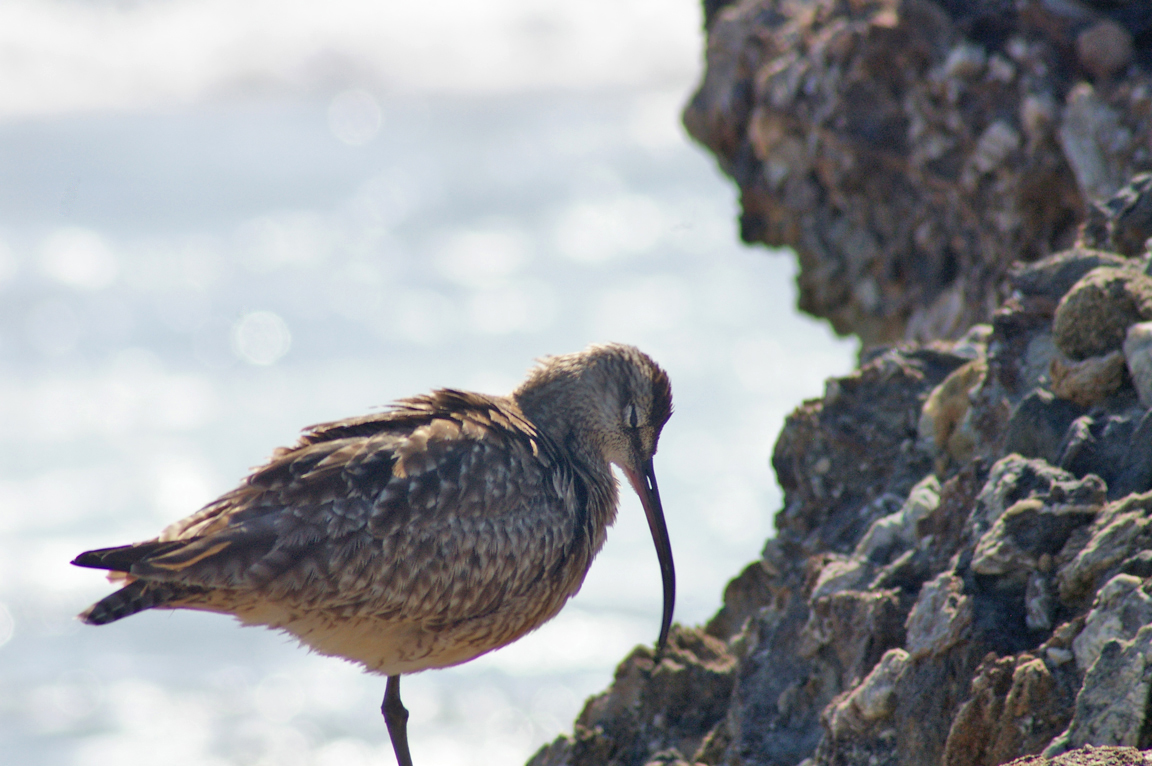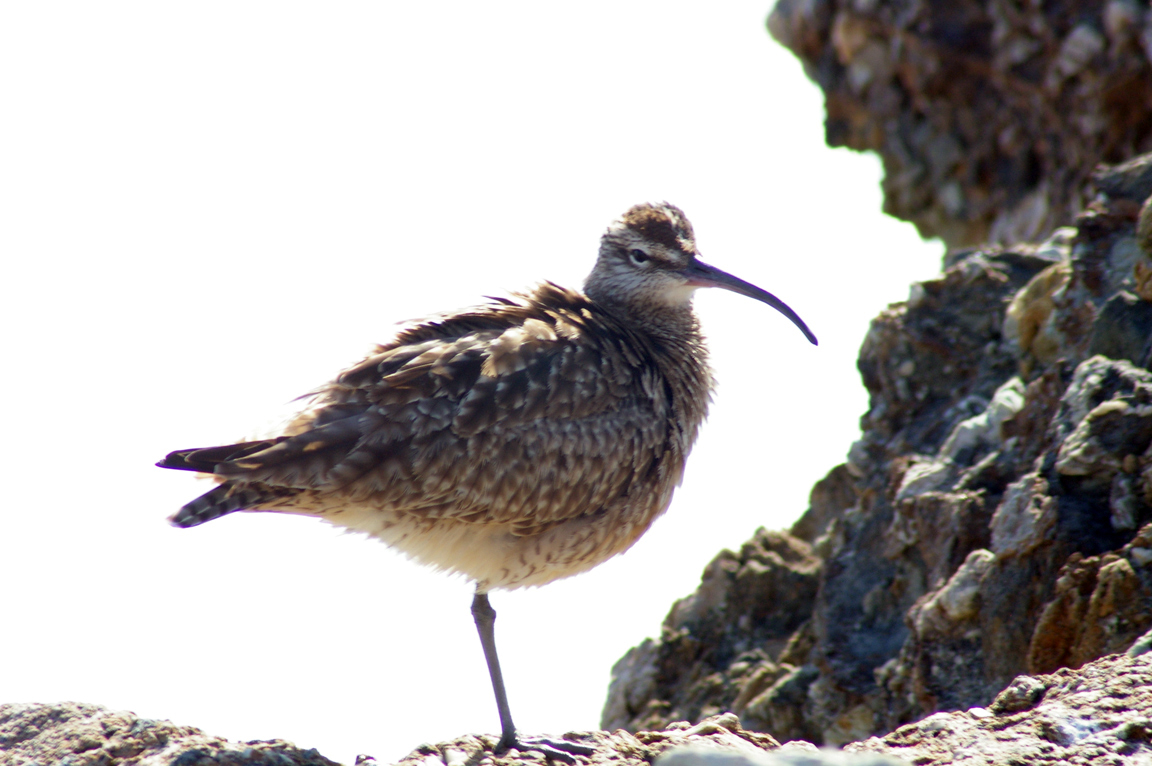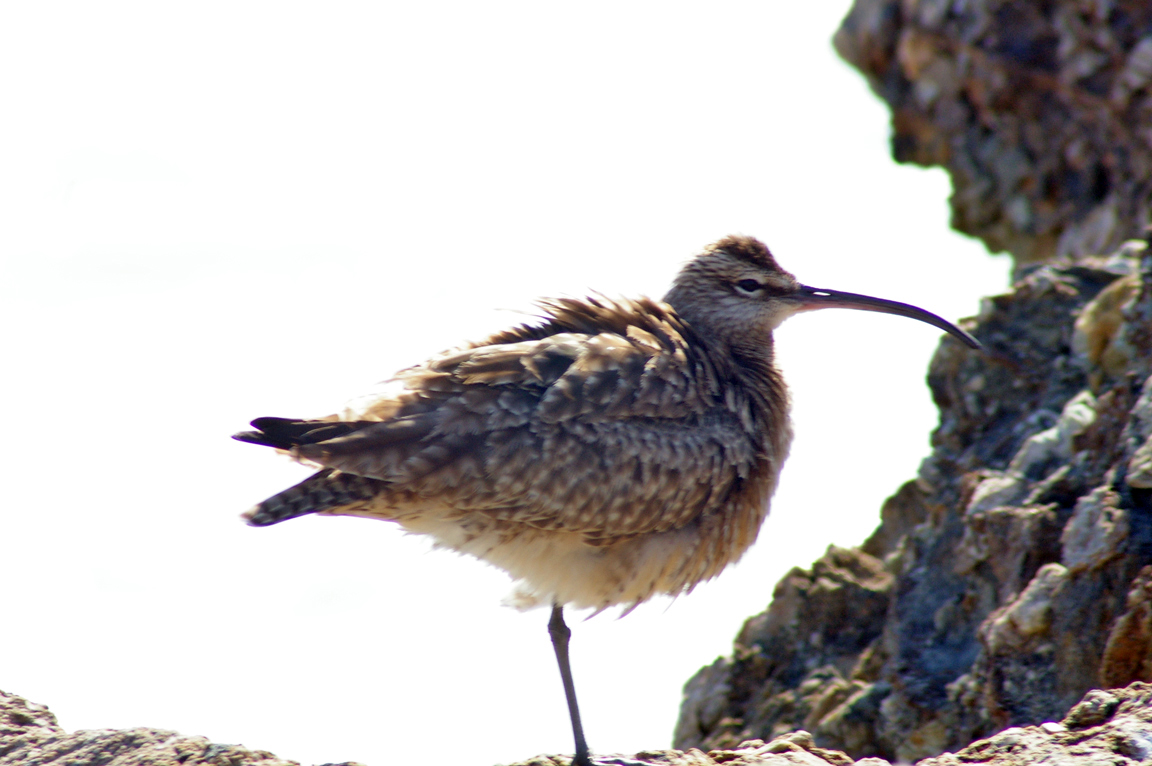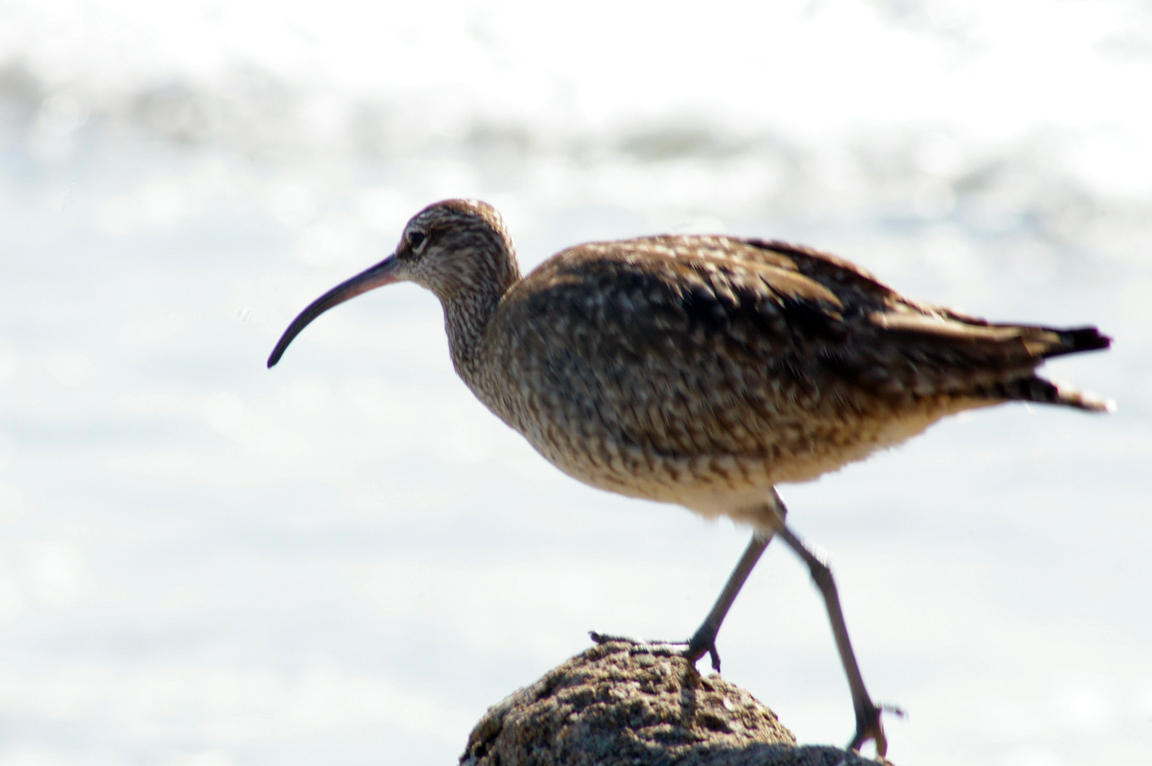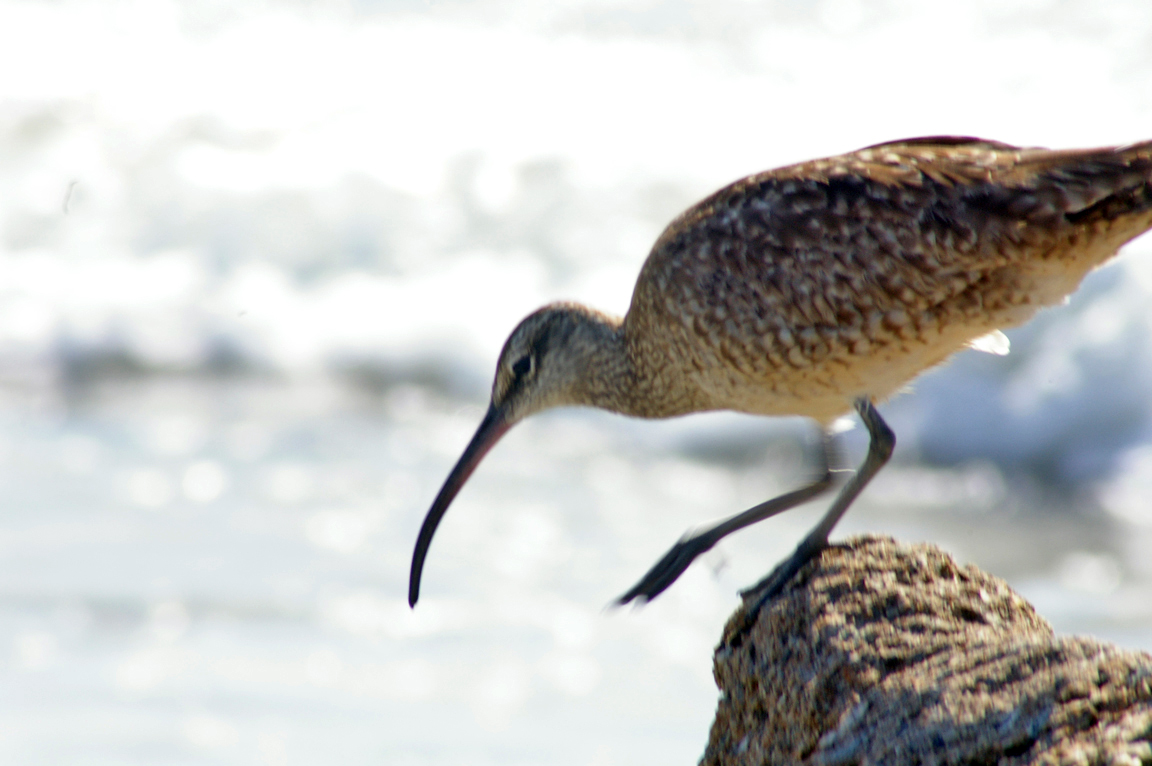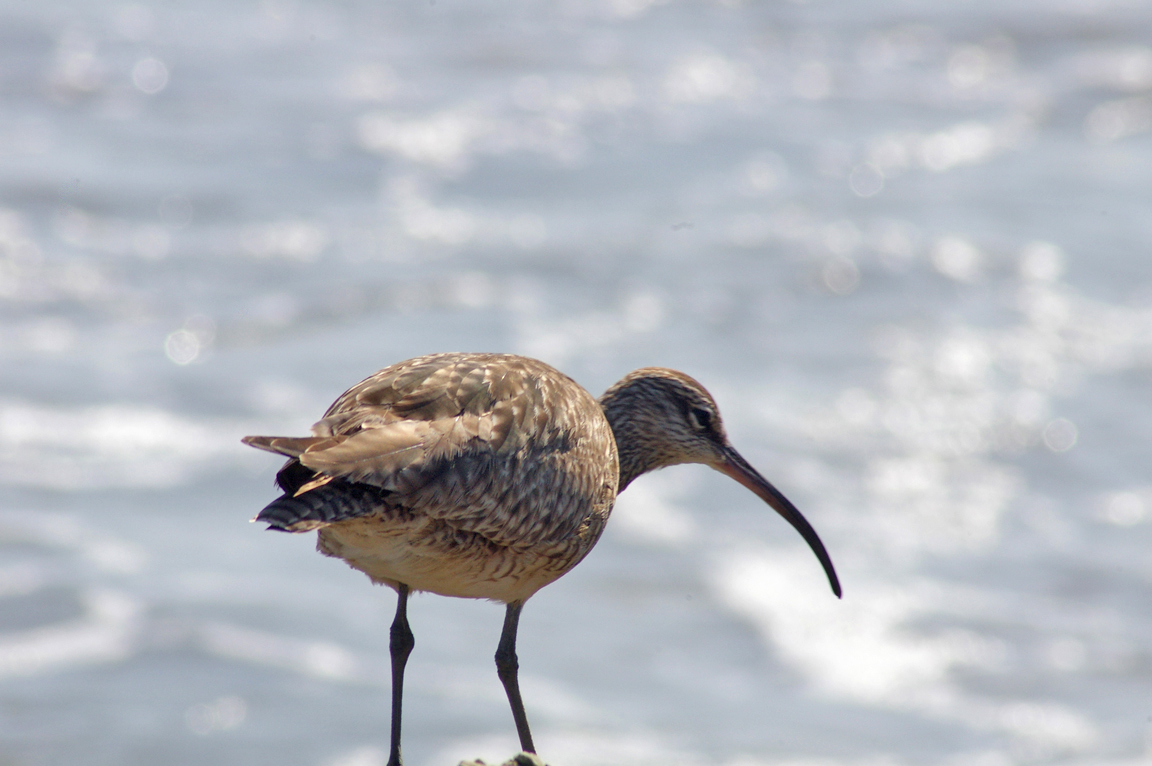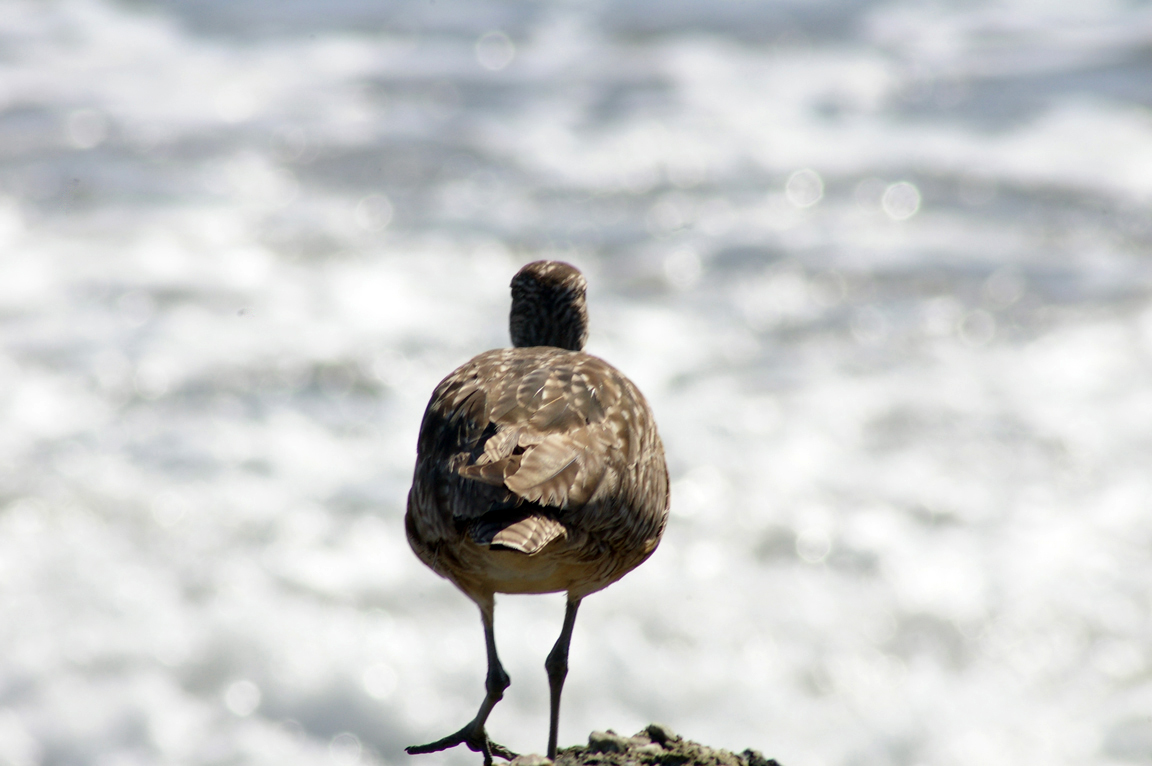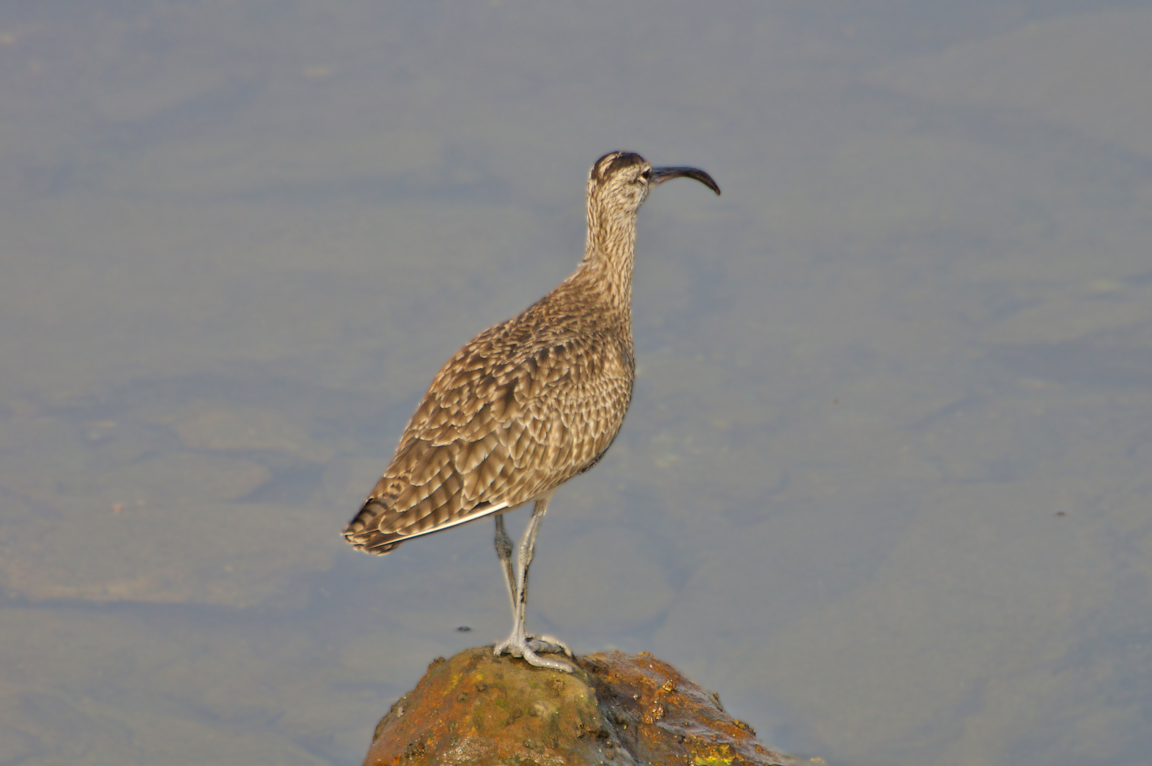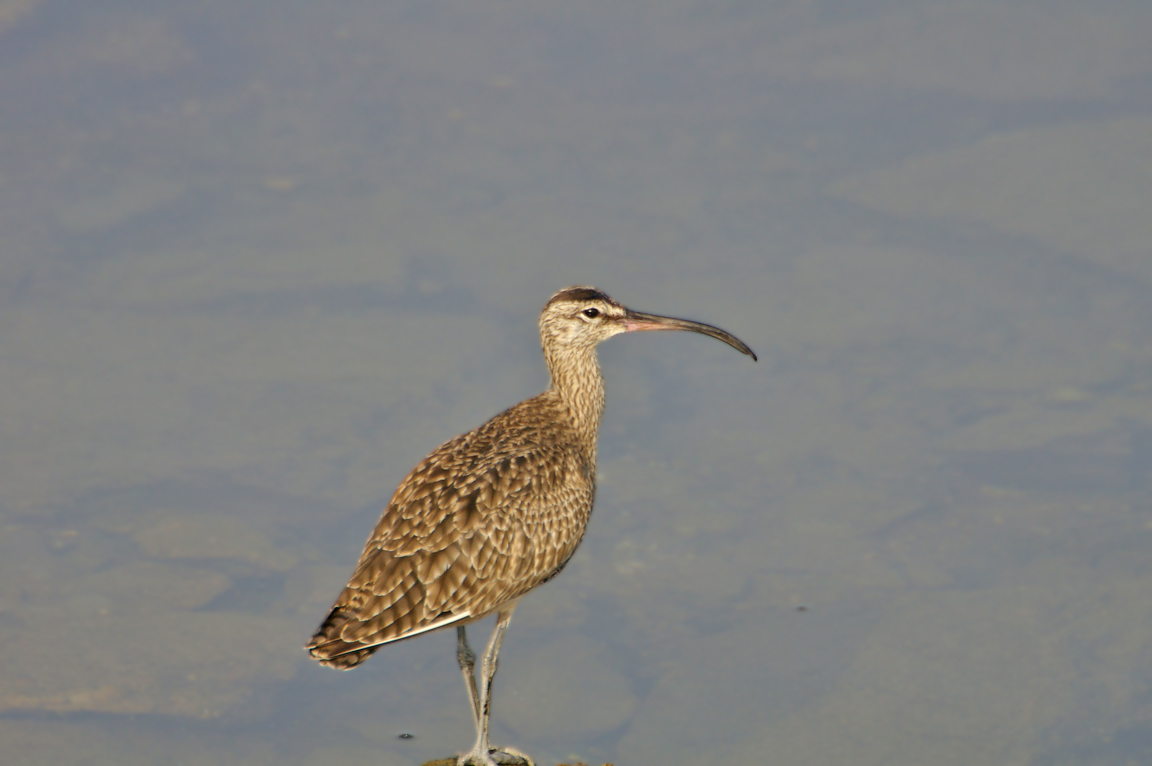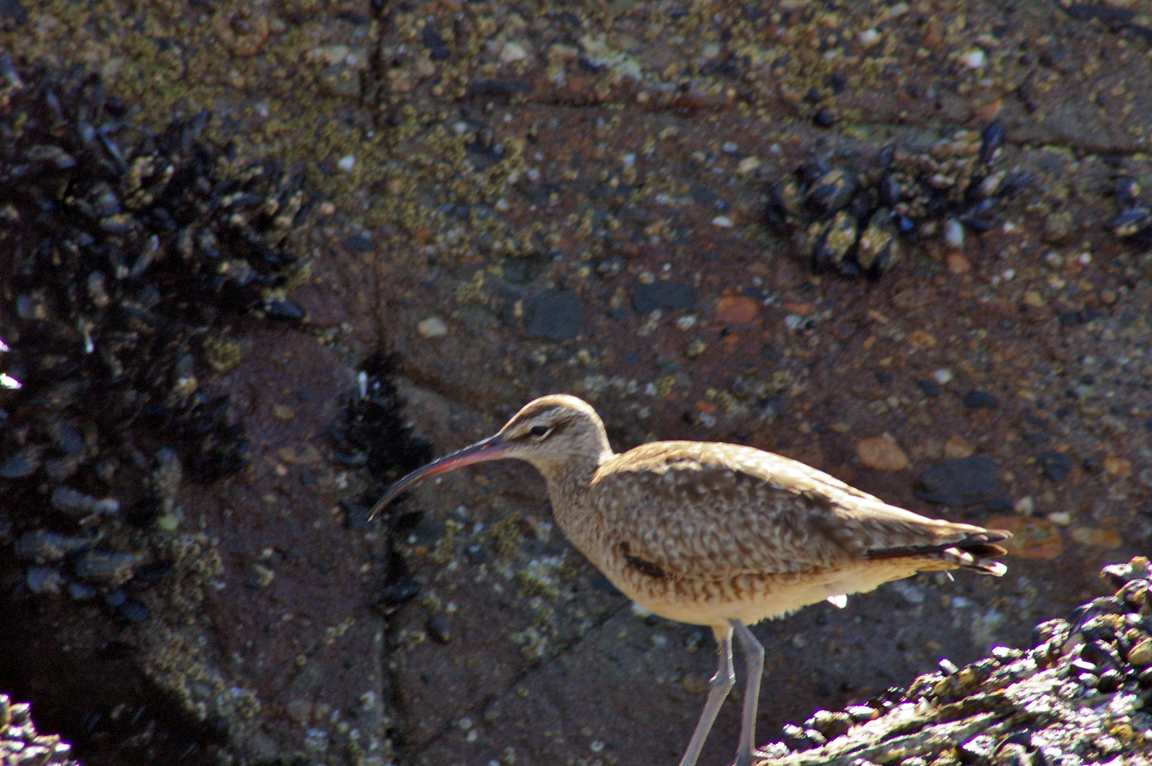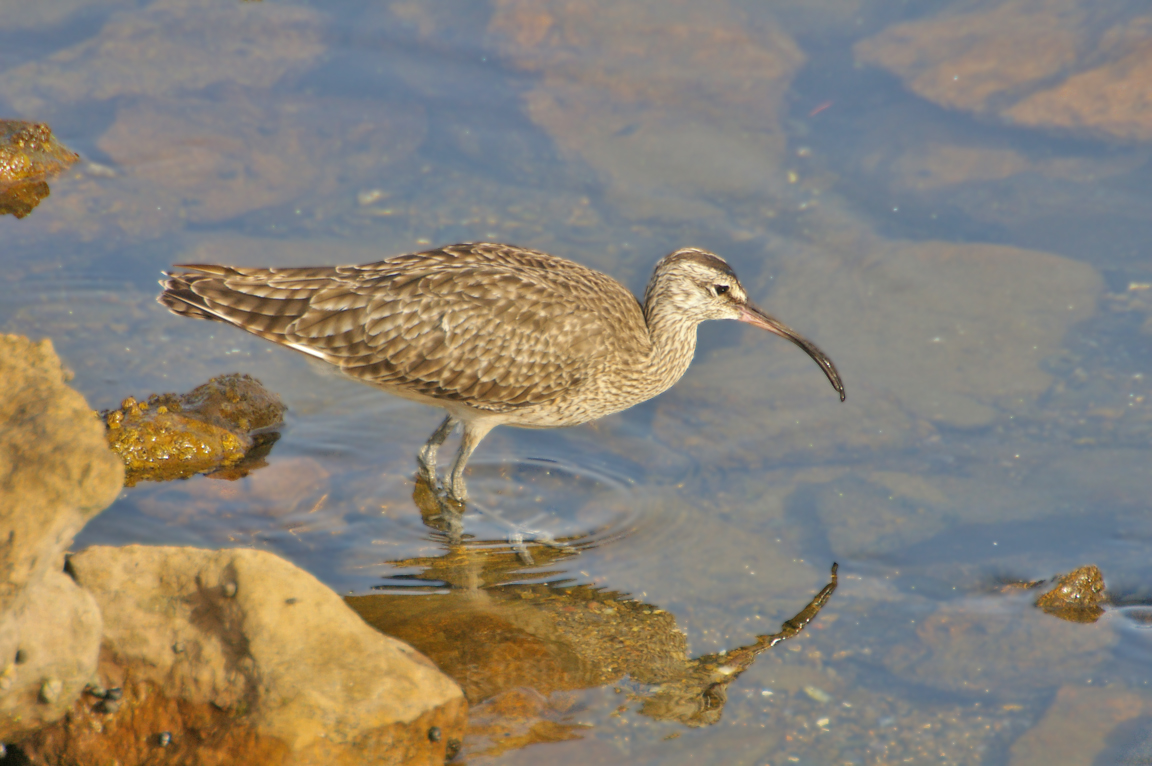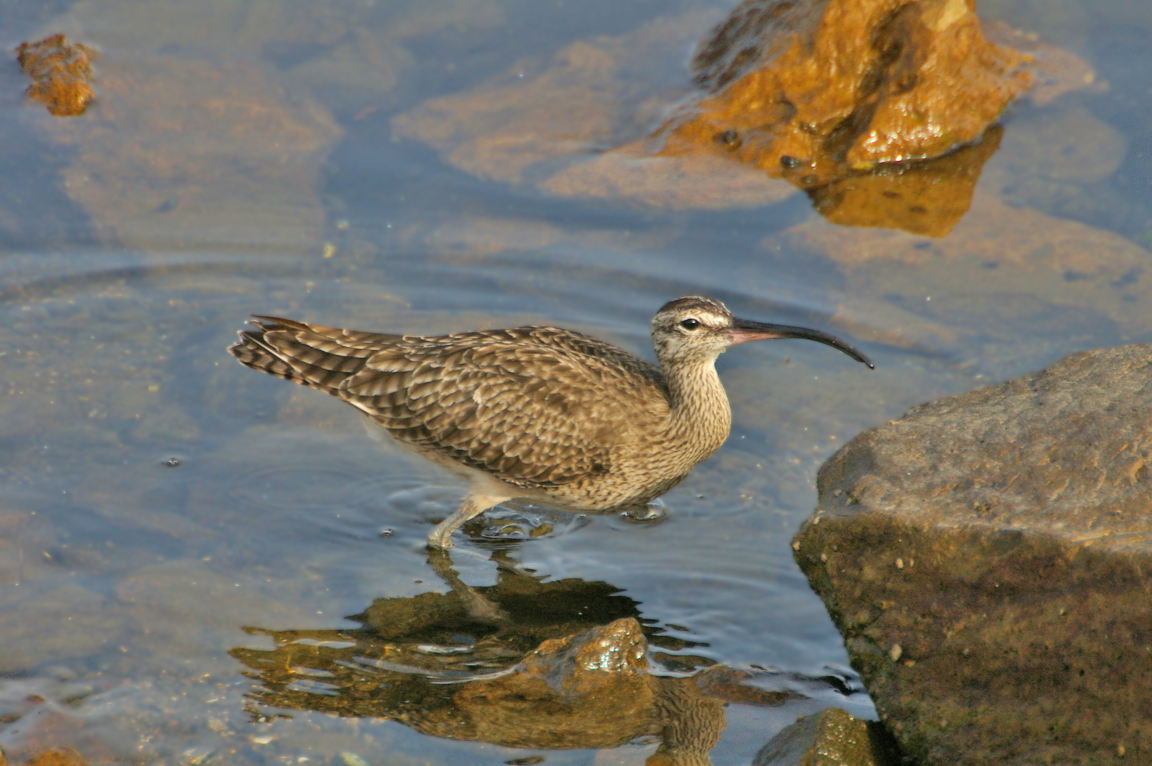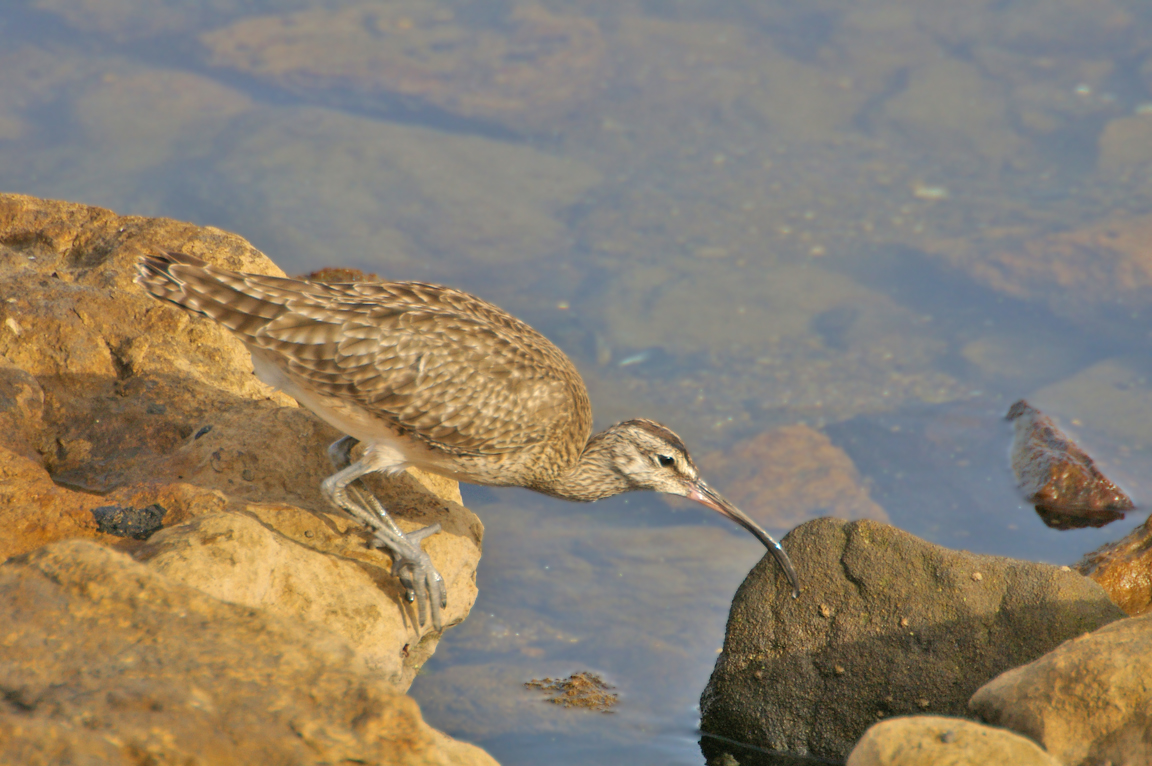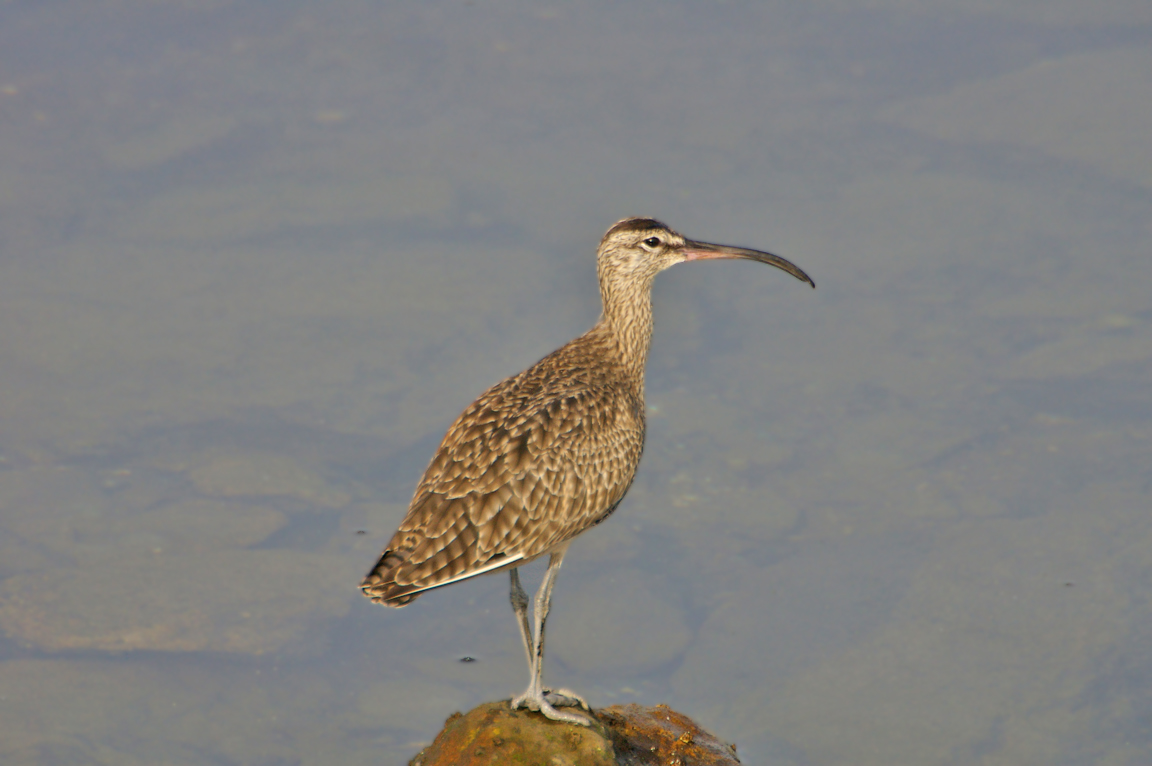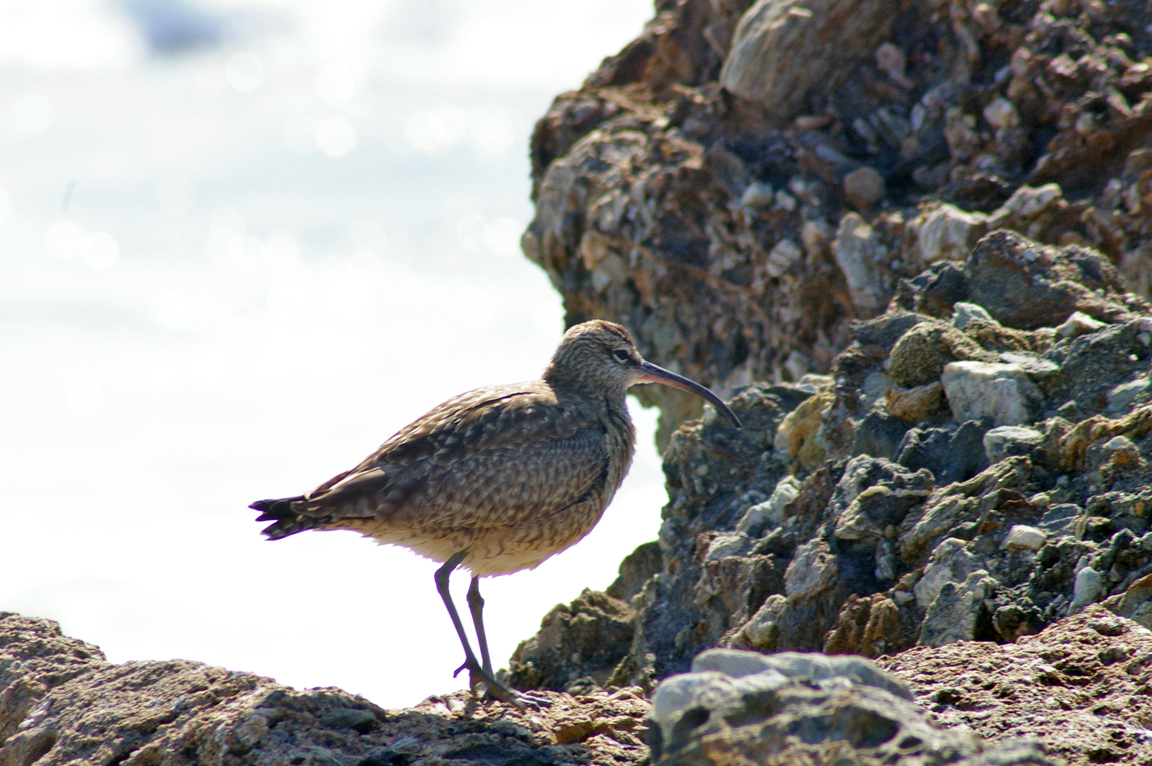|
|
|
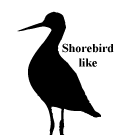 |
Whimbrel
|
| Numenius phaeopus | |
One of the most wide-ranging shorebirds in the world, the Whimbrel breeds in the Arctic in the eastern and western hemispheres, and migrates to South America, Africa, south Asia, and Australia. It uses its long, down-curved bill to probe deep in the sand of beaches for invertebrates, but also feeds on berries and insects.
Interesting Information
Some migrating Whimbrels make a nonstop flight of 4,000 km (2,500 miles) from southern Canada or New England to South America.
Four distinct subspecies of Whimbrel are recognized: one breeds in North America, one from Iceland to northwest Siberia, one in southern Russia, and one in eastern Siberia. The American form was formerly considered a separate species, the Hudsonian Curlew. Whereas the Eurasian forms have white backs, and some white rumps, the American form has a brown rump and back.
In many regions, the primary winter food of the Whimbrel is crab. The curve of the Whimbrel's bill nicely matches the shape of fiddler crab burrows. The bird reaches into the crab's burrow, extracts the crab, washes it if it is muddy, and sometimes breaks off the claws and legs before swallowing it. Indigestible parts are excreted in fecal pellets.
Description
Adult Description
-
Size: 44 cm (17 in)
-
Weight: 310-493 g (10.94-17.4 ounces)
-
Large shorebird.
-
Long, down-curved bill.
-
Long neck.
-
Long legs.
-
Streaked and buffy overall.
-
Crown dark with a distinct light stripe in the middle.Belly white.
-
Sides barred.
-
Bill dark brown with paler base.
-
Tail brown and barred.
-
Rump and back brown.
-
Legs grayish.
-
Eyes dark brown.
Sex Differences
Sexes similar in plumage, but female larger on average.
Immature
Similar to adult, but back with light spots, crown stripe less distinct, breast more buff, and with finer streaking on neck and chest.
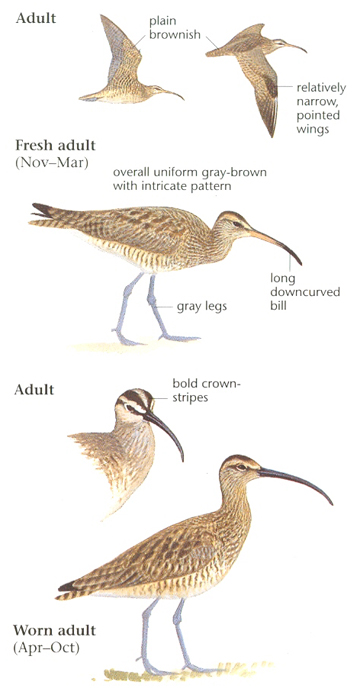
Photo taken from: The Sibley Field Guide by David Allen Sibley
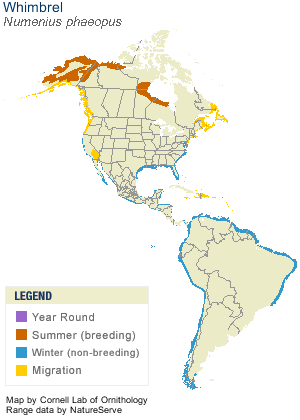
© 2003 Cornell Lab of Ornithology
|
Habitat |
|
Breeds in various tundra habitat, from wet lowlands to dry heath. In migration, frequents various coastal and inland habitats, including fields and beaches. Winters in tidal flats and shorelines, occasionally visiting inland habitats. |
|
Behavior |
|
In intertidal habitats in winter, inserts bill to various depths to pick prey. Locates prey visually. Picks berries with tip of bill, releases and catches berry in throat. |
|
Food |
|
Primarily marine invertebrates, especially small crabs, but also insects, berries, and even flowers during breeding season. |
Taxonomy
| Kingdom: | Animalia |
| Phylum: | Chordata |
| Subphylum: | Vertebrata |
| Class: | Aves |
| Order: | Charadriiformes |
| Family: | Scolopacidae |
| Genus: | Numenius |
| Species: | Numenius phaeopus |
| Subspecies: | Numenius phaeopus hudsonicus |
| Numenius phaeopus islandicus | |
| Numenius phaeopus phaeopus | |
| Numenius phaeopus variegatus |
Similar Species |
|
|
Bird Sound |
|
A loud, rolling twitter. Displaying Whimbrel also utters a low whistle, sometimes repeated and/or followed by a trill. |
|
Eggs look like this |
|
Photo taken from: ARCTOS Collaborative Collection Management Solution |
